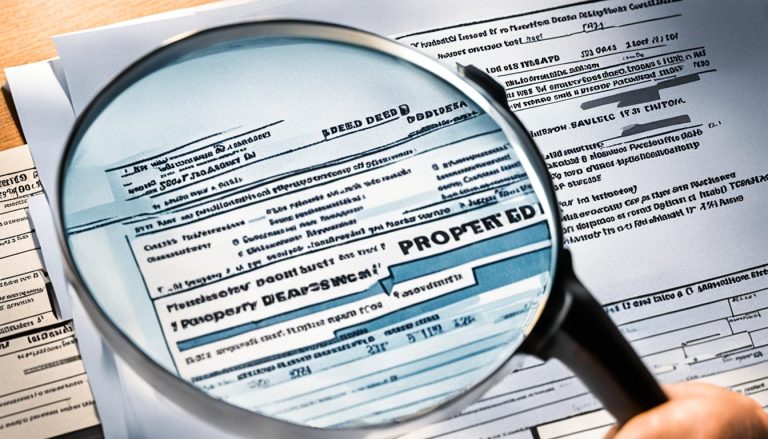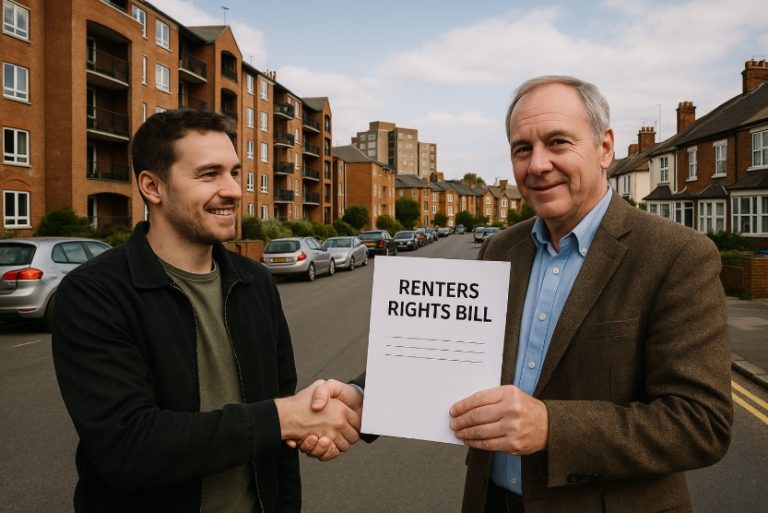Many people don’t know who looks after their drainage system. They think the property owner is always in charge of the drains within their boundary. But, this isn’t always true. Since October 2011, the local authority is now in charge of shared drains.
This means homeowners won’t have to pay for fixing shared drains, even if they’re on their property. It’s a big change that affects many people.
It’s important for property owners and tenants in the UK to understand the law on shared drains. This article will look at the rules, who is responsible, and what you need to do. We’ll talk about the 2011 ruling and the difference between private and public drains. You’ll learn everything you need to know about shared drains in the UK.
Understanding Drains: Private, Shared, and Public
Dealing with drainage in the UK can be tricky. It’s key to know the differences between private, shared, and public drains. Most detached and semi-detached homes have private drains that go up to the boundary. Homeowners are in charge of keeping these drains in good shape.
Distinguishing Between Drains and Sewers
Semi-detached and terraced homes might have shared drains. These carry waste from several houses to the sewers. The company that deals with wastewater owns these shared drains. Lateral drains link private drains to public sewers and can be shared too. The company that handles wastewater looks after their upkeep.
Responsibilities for Private and Shared Drains
Homeowners look after private drains on their property. But, a 2011 decision changed things for shared drains. Now, the local authority is in charge of fixing and maintaining them, not homeowners.
Tenants don’t usually have to fix drains under the Landlord and Tenant Act 1985. But, they might get charged by landlords if they misuse the drains. Insurance might cover accidental damage or problems with tree roots. But, it won’t pay for misuse or normal wear and tear.
If leaks from private drains mess with shared systems or public sewers, property owners could be liable. This shows why it’s vital to fix drainage problems quickly.

What is the Law on Shared Drains?
The UK government changed the rules on shared drains in October 2011. Now, the local water authority is in charge of shared drains, not property owners.
The 2011 Ruling: Transfer of Responsibility
In October 2011, the UK government changed the law on shared drains. This change made the local water authority responsible for shared drains. It also made them responsible for lateral drains, which carry wastewater to the public sewer system.
Before this, property owners looked after shared drains. These drains serve many properties or buildings in close areas. The 2011 ruling was meant to make things simpler and ease the load on property owners.
Now, the local water authority is in charge of shared drains and lateral drains. This has made managing these communal systems clearer and more consistent. It helps with the upkeep of shared drains, which neighbours or those in multi-unit buildings often share.
The 2011 ruling on shared drains was a big step in the UK’s shared drains regulations. It moved the responsibility from party wall act shared drains to local water authorities. This change has made things smoother and less of a burden for property owners in maintaining shared drainage systems.

Property owners need to know about this law change and their roles with shared drains and lateral drains. Being informed and proactive helps ensure these communal systems work well. This benefits everyone in the community.
Who is Responsible for Shared Drains?
The responsibility for shared drains in the UK can be complex. But, there are some clear guidelines. Any drains within your property’s boundary are yours to manage. Shared drains in streets or between terraced houses, though, belong to the local water company.
Since 2011, the responsibility for shared drainage systems has shifted. Now, the local water authority is in charge of upkeep and repairs. They handle blockages or issues with shared drains and lateral drains that carry wastewater to the main sewer.
For detached houses, you’re in charge of drains up to your property line. The local water authority looks after blockages in the main sewer and lateral drains. If you live in a terraced or semi-detached house, shared drains with neighbors mean the water authority is on it. You’re only responsible for your non-shared drains.
In flats or apartments, the management company usually handles drains up to your property line. Beyond that, the local water authority steps in. For private sewers in unadopted roads serving several properties, all owners chip in for maintenance and repair costs.
Private drains and sewers, like those linked to septic tanks or sewage treatment plants, fall on property owners. They handle repairs, as the local water authority isn’t in charge.
To wrap it up, the local water authority manages shared drains, lateral drains, and public sewers. Homeowners look after private drains and pipes on their land. Getting expert advice or a drain survey can pinpoint who’s responsible.

Detached and Semi-Detached Homes: Drain Ownership
The rules for drain ownership differ based on your home type. If you live in a detached or semi-detached home, managing your drains is usually clear-cut.
In detached houses, any drains within your property are yours to maintain. This includes the drains at your home’s front, known as lateral drains. But, drains that go beyond your property line are handled by the local water authority.
For semi-detached homes, you look after the drains on your property. The shared or lateral drains along the property line, serving both your and your neighbour’s homes, are the water company’s job.
- Detached houses: Homeowners manage private drains within their property, while lateral drains outside are the water authority’s.
- Semi-detached homes: Homeowners handle private drains, while shared or lateral drains are for the water company.
The 2011 ruling made it clear that lateral drains are now the local water authority’s duty. This ruling made managing shared drains easier for homeowners.

To figure out who owns your drains or if they’re shared, reach out to your local water authority or a professional drainage service. Keeping shared drains clean is key to avoiding blockages and ensuring good drainage for everyone.
Shared Drains for Terraced Houses and Flats
Living in terraced houses or flats in the UK means the local water authority looks after shared drains. These drains are outside your property or shared with neighbours. They are different from the plumbing inside your home and the pipe to the sewer, which you are responsible for.
Responsibilities of Management Companies
In flats or apartments, the management company takes care of shared drains. If there’s a blockage, they fix it. You don’t have to worry about maintaining these drains yourself.
But, if you live in a terraced house or flat, you might still have some duties. If the problem is near your property or caused by you, you could be liable for the repair costs. It’s key to talk to your neighbours and the management to figure out who should fix it.
| Property Type | Drain Responsibility |
|---|---|
| Terraced Houses | Property owners are responsible for the part of the drain immediately before it connects to the drains of the other terraces in the row. The rest is the responsibility of the local water authority. |
| Flats/Apartments | The management company is responsible for maintaining the shared drains in the complex. Residents are not individually responsible for the shared drain system. |
To sum up, shared drains in terraced houses and flats in the UK are mainly looked after by the local water authority or the management company. But, property owners might still have duties if the issue is near their property or caused by them.

Private Sewers: Responsibilities and Adoption
If your home is linked to a private sewer, you and other property owners share the upkeep and repair costs. You can ask the local water or sewerage company to take over the sewer. This means they will handle the maintenance instead of you.
Maintaining Private Sewers
When you own a sewer, you must fix any blockages with your neighbours. This can sometimes cause disagreements and higher costs. If talks with neighbours don’t work out, local Environmental Health Officers can step in to help.
Landlords must fix blocked drains in rented homes. Tenants should tell their landlord about any drainage problems. Not sorting out shared drain issues can lead to big disputes, so it’s key to talk and work together with neighbours.
Requesting Sewer Adoption
- Homeowners with private sewers can ask the local water or sewerage company to take over the system.
- This process is called sewer adoption and follows the Water Industry (Schemes for Adoption of Private Sewers) Regulations 2011, which started on 1 July 2011.
- These rules let the public sewer network take over all lateral drains and private sewers connected by 1 July 2011.
- Private pumping stations were also moved to public ownership, with the change to be done by 1 October 2016.
- Switching ownership of private sewers to water and sewerage companies helps solve issues like maintenance costs and neighbour disputes.
By asking for sewer adoption, homeowners can avoid the upkeep and dispute problems with private sewers. The local water or sewerage company will then look after the drainage system.
Identifying Drain and Sewer Ownership
Finding out who owns drains and sewers can be tricky, but it’s key for homeowners. Knowing if you’re on a private or public sewer system affects how you maintain your drains. It’s important to understand your role in keeping the drainage system working well.
Checking Property Deeds and Sewer Maps
Looking at your property deeds is the first step to figuring out who owns the drains. These documents might tell you if your home uses a private or shared drain, or if it’s linked to a public sewer. You can also ask your local water authority for a sewer map. This map shows where drains and sewers are and who they belong to in your area.
If your home uses a shared drain, knowing who is responsible is vital. Sometimes, the local water authority looks after shared drains. But other times, the homeowners connected to the drain are in charge of its upkeep.
- Check your property deeds for information about the drainage system serving your home.
- Contact your local water authority to request a copy of the sewer map for your area.
- Determine if your drain is private, shared, or connected to a public sewer system.
- Understand the maintenance responsibilities for shared drains, as they may be shared among the connected homeowners.
Knowing who owns and is responsible for your drains and sewers helps you follow the law. It also prevents problems with your neighbours or the local authorities.
Conclusion
The UK’s law on shared drains has changed a lot over time. In 2011, the government made a big move. They made the local water authority responsible for all shared drains, not property owners. This includes lateral drains that go beyond property lines and connect to public sewers.
Homeowners need to know their rights and duties about shared drains. They should also understand the roles of local water companies and management firms for places like terraced houses and flats. It’s important to know the difference between private, shared, and public drains and sewers. This helps in following the rules and solving any disputes.
Even with the law, issues like who pays for shared drain upkeep can cause neighbour disputes. If this happens, getting legal advice, trying mediation, and working with local authorities and water companies can help. By keeping informed and talking openly, homeowners can solve these problems together. This ensures a better drainage system for everyone.
FAQ
What are the responsibilities for private and shared drains?
You’re in charge of drains on your property. Shared drains in streets or between houses are the local water company’s job.
How do drain responsibilities differ for detached and semi-detached homes?
For standalone homes, drains within your property are yours. Lateral drains outside are the water company’s job.
What are the responsibilities for shared drains in terraced houses and flats?
Semi-detached or terraced homes often have shared drains. These are the local water authority’s duty.
How are private sewers handled?
Private sewers have different rules. All connected property owners share the upkeep and repair of these drains.
How can you identify drain and sewer ownership?
Check your property deeds and the public sewer map from the local water authority to see if you’re on a private or public sewer.






